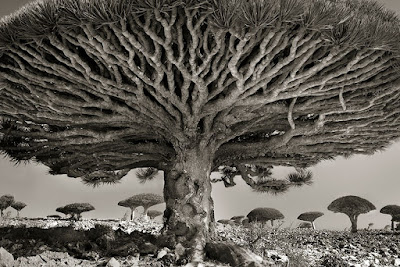From American Bandstand. October 13, 1964.
The song was released as a single on Gary S. Paxton's Garpax Records label in August 1962 along with a full-length LP called The Original Monster Mash, which contained several other monster-themed tunes. The Monster Mash single was #1 on the Hot 100 chart on October 20–27 of that year, just before Halloween. It has been a perennial holiday favorite ever since. It was on the top 50 in November of 2014, a full 50 years after its debut. I had a most enjoyable Halloween party in a caravan in the Lake District to (I think) the 1977 Monster Mash album, so it inspires fond memories. After getting tanked up we went down to the sea and used my friend as a human compass lying on the floor to point out the North Star. It was great fun, until we realised he had done a whisky sick, and we were spinning him around in it. Mixed evening. On the whole, good.
Incredibly despite the lampoonery, a recent "Roots of Rap" geneology tree has Monster Mash as a full branch on the tree, equal to Walter Brennan to Leonard Nimoy, and Lorne Greene!
In a 2004 interview with the Washington Post, Pickett said:
Washington Post: If you never worked another day in your life, would the royalties from Monster Mash be enough to support you? Are we talking big bucks here? Six figures a year perhaps?
Bobby "Boris" Pickett: Let's just say that it has paid the rent for 43 years.
Bit of 1953 Boris for ya
Pickett and Capizzi recorded the song with Gary S. Paxton, then-unknown piano player Leon Russell, Johnny MacRae, Rickie Page, and Terry Berg, credited as "The Crypt-Kickers". (Mel Taylor, drummer for the Ventures, is sometimes credited with playing on the record as well, while Russell, who arrived late for the session, appears on the single's B-side, "Monster Mash Party".) The song was partially inspired by Paxton's earlier novelty hit "Alley Oop".
Pickett and Capizzi finished the “Monster Mash” in one afternoon, then cut it with producer Gary Paxton. Eight weeks later, in October 1962, the song was No. 1. The recording itself was completed in only a couple of hours. It was rejected by four major labels before Paxton, released "Monster Mash" on his own label.
"Monster Mash" was the product of a very specific cultural moment and that upon its release the audience understood precisely what it was parodying. The two fads it drew on were the spate of Twist-inspired early 60's dance craze records, in this case specifically "Mashed Potato Time" by Dee Dee Sharp (based on the "Mashed Potato" dance craze, which is where The "Mash" in the title comes in); and the contemporaneous movie monster craze, ignited by the re-packaging for television of the Universal Studios 1950's monster movie catalogue, under the collective title "Shock Theatre". The "Monster Mash" was a variation of the Mashed Potato, in which the footwork was the same but Frankenstein-style monster gestures were made with the arms and hands.
Bobby Pickett's record parodies "Mashed Potato Time" by turning it into a song about the movie monsters craze. The monsters in question have congregated at Dr. Frankenstein's lab and learn a new dance called the Monster Mash. The song is narrated by a mad scientist whose monster, late one evening, rises from a slab to perform the new dance. The dance becomes "the hit of the land" when the scientist throws a party for other monsters. Pickett does most of the record in his Boris Karloff voice, except for one line, which is the record's most brilliant moment: At the end of the fourth verse, in the exact same spot where Dee Dee Sharp had exclaimed "They even do it to 'Dear Lady Twist,'"
Bobby Pickett's record parodies "Mashed Potato Time" by turning it into a song about the movie monsters craze. The monsters in question have congregated at Dr. Frankenstein's lab and learn a new dance called the Monster Mash. The song is narrated by a mad scientist whose monster, late one evening, rises from a slab to perform the new dance. The dance becomes "the hit of the land" when the scientist throws a party for other monsters. Pickett does most of the record in his Boris Karloff voice, except for one line, which is the record's most brilliant moment: At the end of the fourth verse, in the exact same spot where Dee Dee Sharp had exclaimed "They even do it to 'Dear Lady Twist,'"
Bobby "Boris" Pickett doing the Mash
Being 1962, many of the sound effects had to be created in the studio. The producers came up with several low-budget but effective sound effects for the recording, as follows:
- The coffin being opened was made by pulling a rusty nail out of a lump of wood with the claw of a hammer.
- The bubbling sounds came from blowing through a straw in a glass of water.
- The sound of the chains was made by dropping chains onto plywood planks on the record studio floor.
In a 2004 interview with the Washington Post, Pickett said:
Washington Post: If you never worked another day in your life, would the royalties from Monster Mash be enough to support you? Are we talking big bucks here? Six figures a year perhaps?
Bobby "Boris" Pickett: Let's just say that it has paid the rent for 43 years.
North Utsire




.jpeg)



























